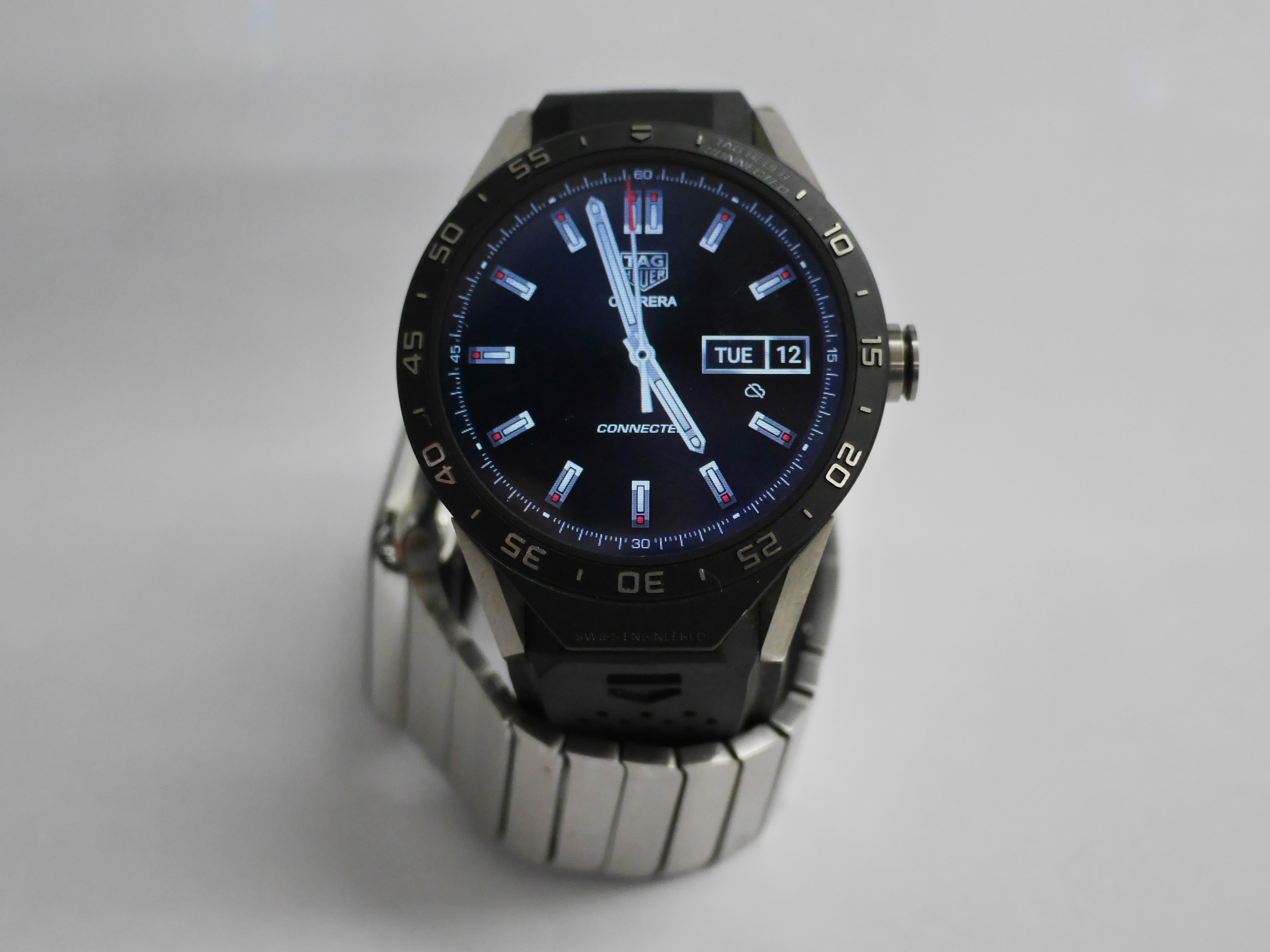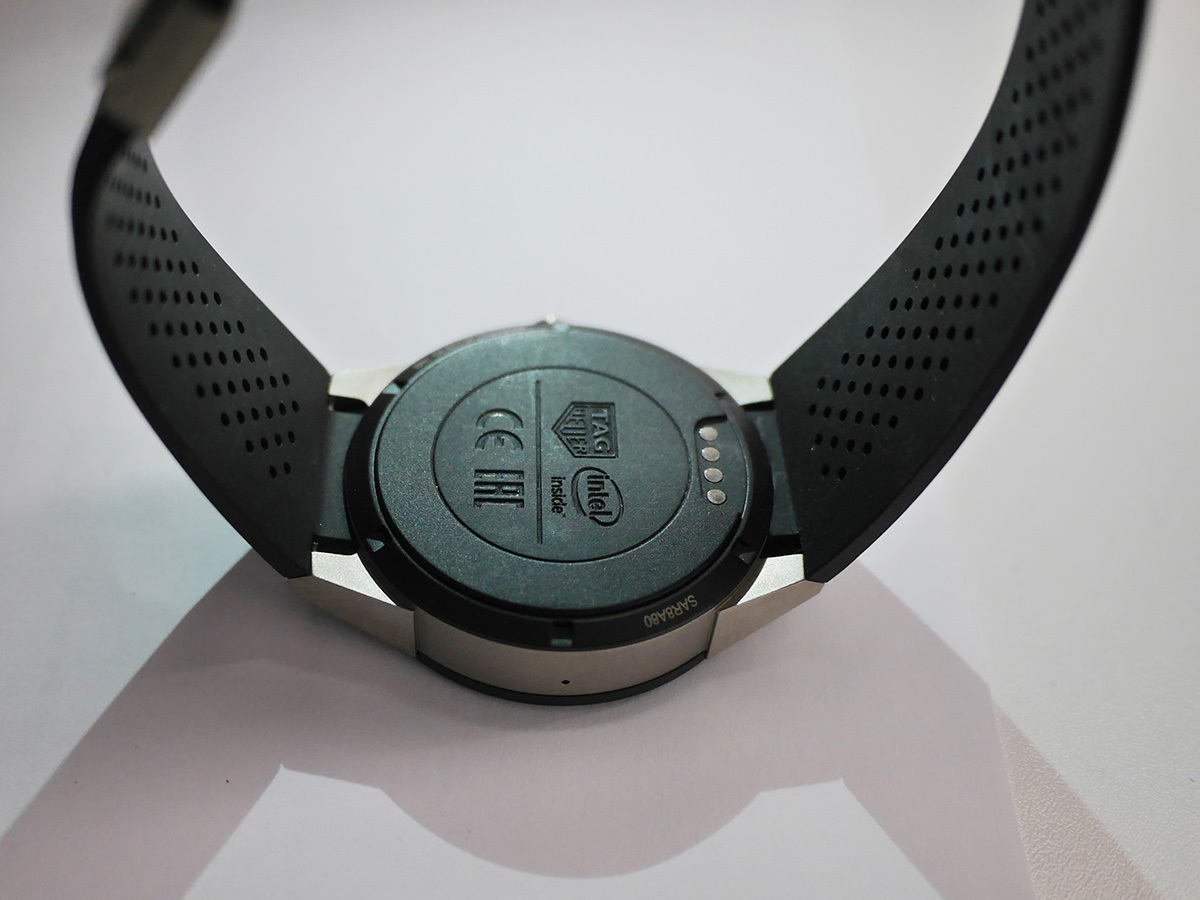Tag Heuer Connected review
A picture of an expensive watch, for the price of an expensive watch

First, let’s talk about the economics of smartwatches. Wait, come back! It’ll be quick, and hopefully interesting.
Here’s why: all the gadgets you’ve bought so far, your phone and your TV, have been ‘durable goods’: that’s what economists call products you buy and use for a year or so. They’re competitively priced and sold in large volumes, and for manufacturers, they’re a pain: making something that’s affordable and works properly is tough, you can only raise your prices if you invent something really great and different, and even then, someone will come along and copy it within months.
The better option is to produce ‘Veblen goods’. This is what economists call products that are valuable because they’re expensive. Barack Obama and Vladimir Putin both wear Brioni suits, which are perceived to be the best simply because they’re much more expensive than other suits. Hermès handbags take a couple of days and some cowskin to make but they can sell for £50,000, because the higher the price, the more desirable some people find them. Some car marques have worked the Veblen magic, too – people will join waiting lists for new Ferrari or Aston Martin models.
The giants of Silicon Valley would dearly like to make Veblen goods too. Exclusive products that only a few can have, to which they can keep adding zeroes and people will only want them more. That’s why you can buy an Apple Watch Edition with an Hèrmes strap, and that’s why you can buy a Tag Heuer Connected. But should you?
Swiss engineered? Sort of

The materials used are expensive: titanium for the body and sapphire for the screen mean it’s light (Apple’s ferrous Watch feels heavy in comparison) and strong. Combined with the rubber strap, this makes it wearable for sports, although it’s about 20% thicker than the Apple Watch Sport and a full 2.5mm thicker than the Sony Smartwatch 3. It also lacks the GPS and heart-rate sensor of a proper fitness watch.
It’s comfortable to wear, but not as comfortable as the Basis Peak or Apple Watch Sport, and it doesn’t feel as nicely made as Apple’s more premium stainless-steel Watch. The back is just a circle of black plastic with some charging contacts. The £300 Apple Watch Sport, with its glass circle of sensors and its wireless charging magnet-thing, looks more futuristic and expensive.
The bezel has ‘Tag Heuer Connected’ written on it, which could be handy if you forget the name of the product on which you spent £1,100, and at 6 o’clock there’s some more writing: Swiss Engineered. You have to wonder how wise it is to shout this from the front of a product that doesn’t contain a Swiss watch movement – which is, let’s be frank, a Swiss case for some Chinese-made electronics designed by American companies.
Our top smartwatch › Apple Watch review
Spot the pixels

The Connected displays a regular watch face when it’s not in use. It looks good, if a little dim in artificial light, and it saves you from having to perform the embarrassing Smartwatch Flick Manouver when you want to know what time it is. And that’s all the nice things you can say about this display.
If you spent £1,100 on a phone or a tablet or a TV in 2016, you’d be more than a little disappointed if you could make out the pixels on its screen in normal use. The Connected’s 360 x 360 screen has a pixel density of 240ppi. That means the screen is less sharp than an iPhone 4, and the iPhone 4 was released five and a half years ago. There are probably sound technical reasons for this – battery life would be worse with a high-res screen, and performance would be slower – but those are compromises, and for £1,100 you don’t get to compromise.
On a sub-£200 smartwatch, like the Pebble Time, you can notice pixels and not care. If you’re spending four figures, the face of your expensive watch’s face should look like an expensive watch face. The Tag Heuer Connected’s display is very obviously a screen, and not a great one. It’s a picture of an expensive watch, for the price of an expensive watch.
Also read › Moto 360 (2015) review
Up and Atom

Although in many ways a standard Android Wear smartwatch, Tag Heuer Connected differs from most others in that it runs on an Intel chipset. This has a couple of advantages that I could see.
Firstly, the Bluetooth connection between the watch and the phone is very strong and reliable. If you have a big fancy house with stairs in it, you can leave your phone downstairs and still get notifications on the watch.
Secondly, battery life is very decent: two days of regular use, despite the always-on screen. This stamina is aided by a 400mAh battery that’s much bigger than both the the 300mAh model you’ll find in a Moto 360 or the comparatively tiny 205mAh battery featured in Apple’s Watch.
You Gotta USB Kidding Me

Am I really going to complain about a USB cable? Actually, yes I am, because – as I may have mentioned a couple of times already – this is a product you’re being asked to pay £1,100. According to the Office of National Statistics, £1,100 would feed an average UK family for over four months.



